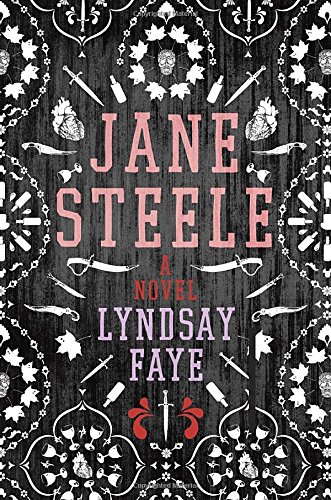Jane Steele
“Reader, I murdered him.” In this satirical riff on Jane Eyre, orphaned Jane Steele is governess to the ward of eccentric Anglo-Sikh War veteran, Mr. Thornfield. Thornfield is unaware his new employee is a serial murderess and possible heir to his estate – the reason she’s infiltrated his household, with the express purpose of killing him.
Quotes from and elements of the original remain: Jane’s hateful relations, a cruel headmaster, a sickly best friend. The novel has multiple creative strengths: a murder broadside author with a hilarious grasp of the King’s English (“Mr. Munt was lauded as the most distinguished philanderist, and a knife was shoved so far into his throat that his molars suffered renumerous damages…”), Thornfield with an East India Company background and entirely Sikh household. Characterization is strong, and Jane is a capable narrator. Yet once she arrives in Thornfield’s household, the story devolves into a search for missing treasure, smarmy romance, and pat resolution.
Perhaps most disappointing is Jane herself. While profane, promiscuous, a profligate liar, and violent when it suits her, Jane shares with the original her independence, and a moral code all her own – cover blurbs call her a “gutsy, heroic serial killer.” The obvious implication: Jane’s kills are justified, and you’re supposed to root for this good person doing bad things for good reasons. While this provides some satisfaction at seeing villains from the original get their lethal comeuppance, a far less sympathetic Jane and unapologetic tone would’ve been more fun. If you’re gonna go for ridiculous, as one obviously is with a serial killer Jane Eyre… go whole hog. Jane Steele waters it down: kill people, but as long as they’re not nice people and you get all moony in love, you’re still good enough, smart enough, and doggone it, people like you.










